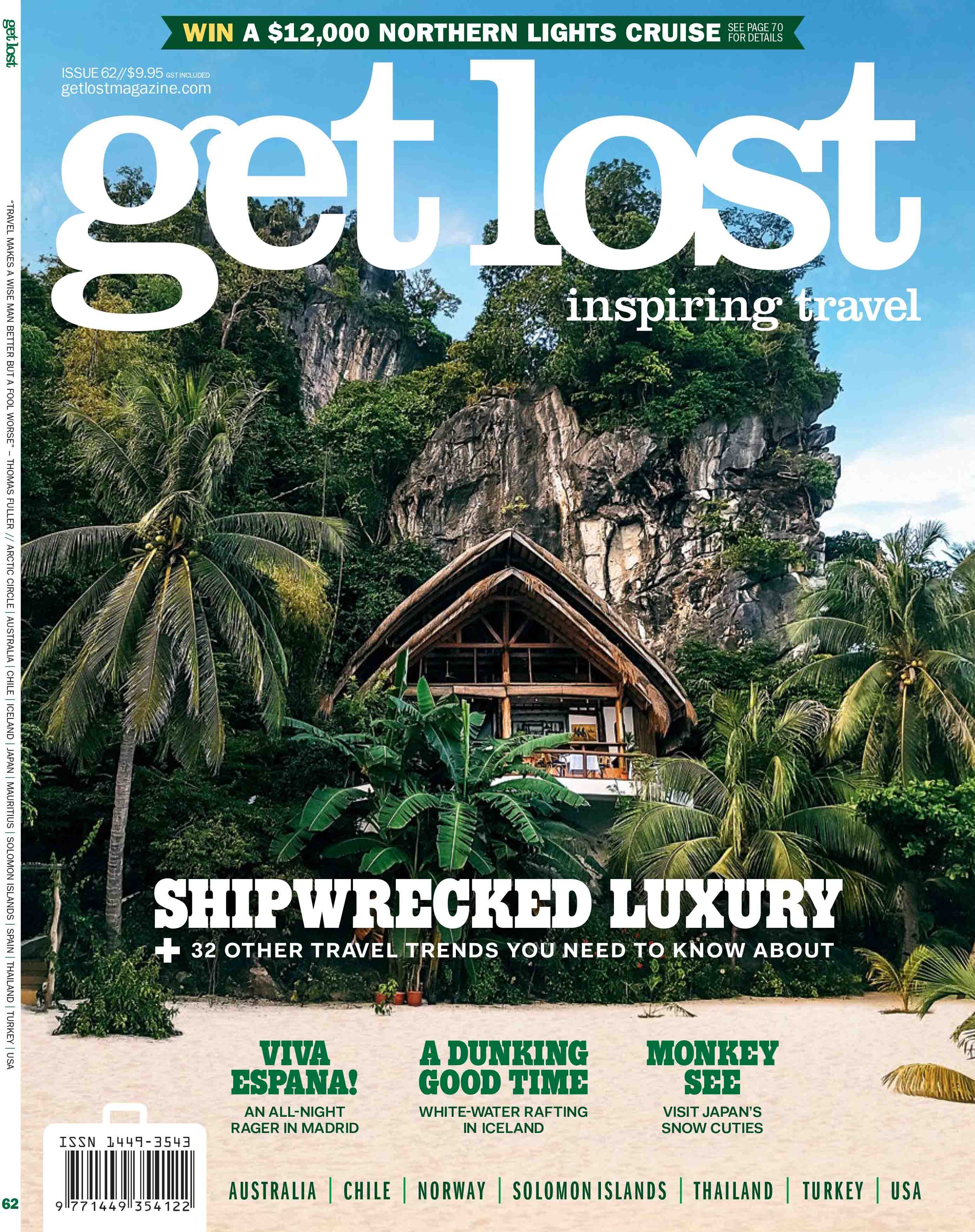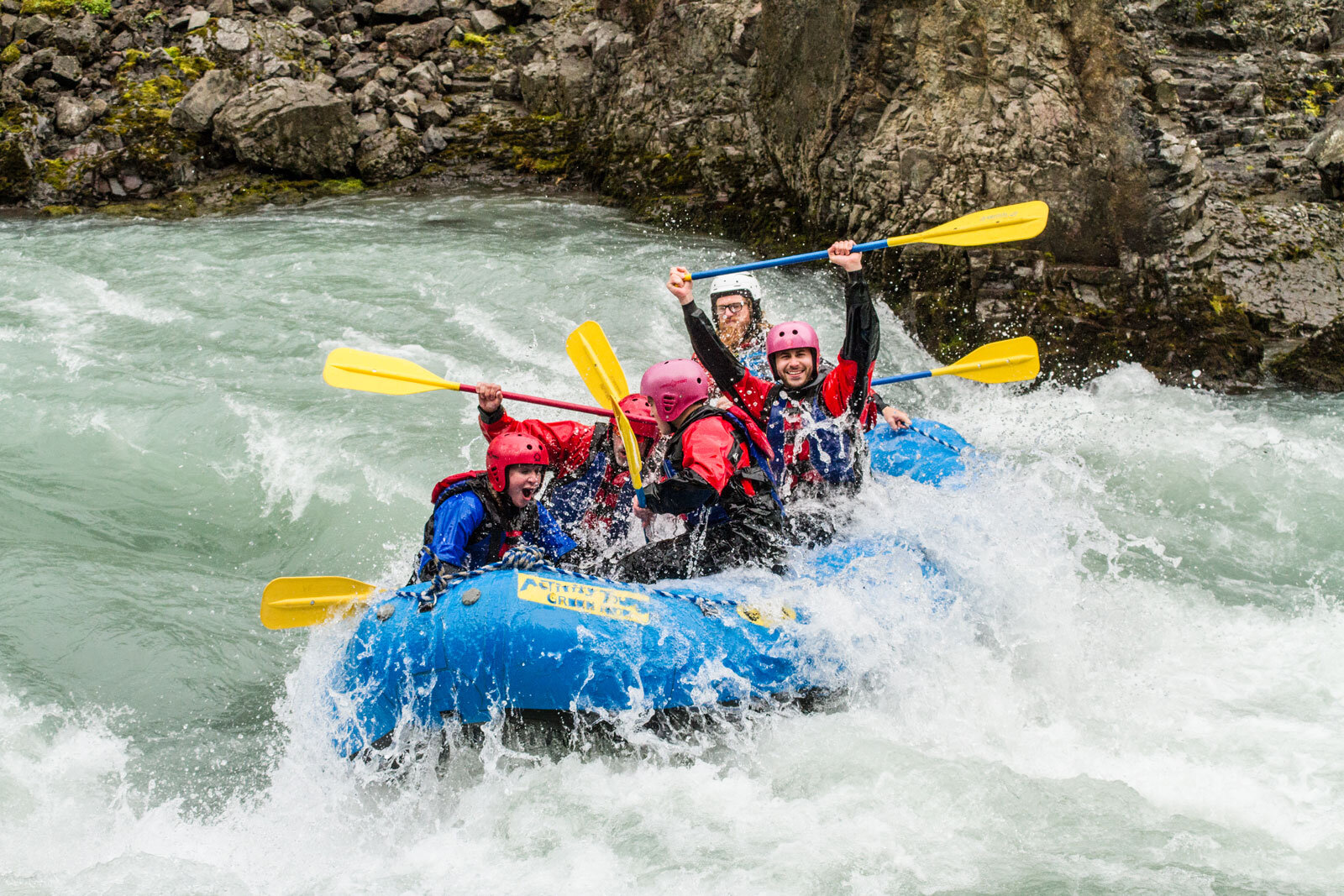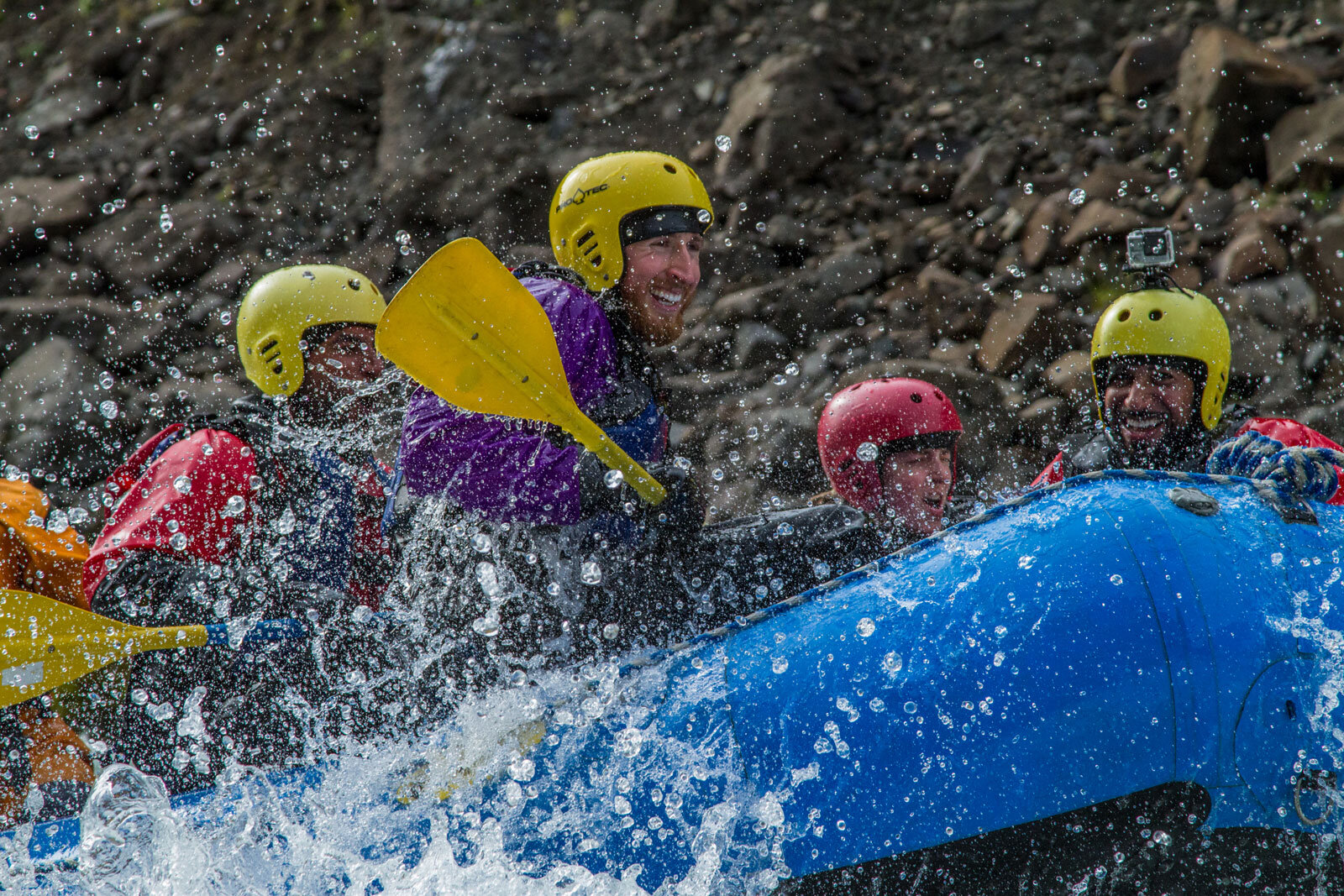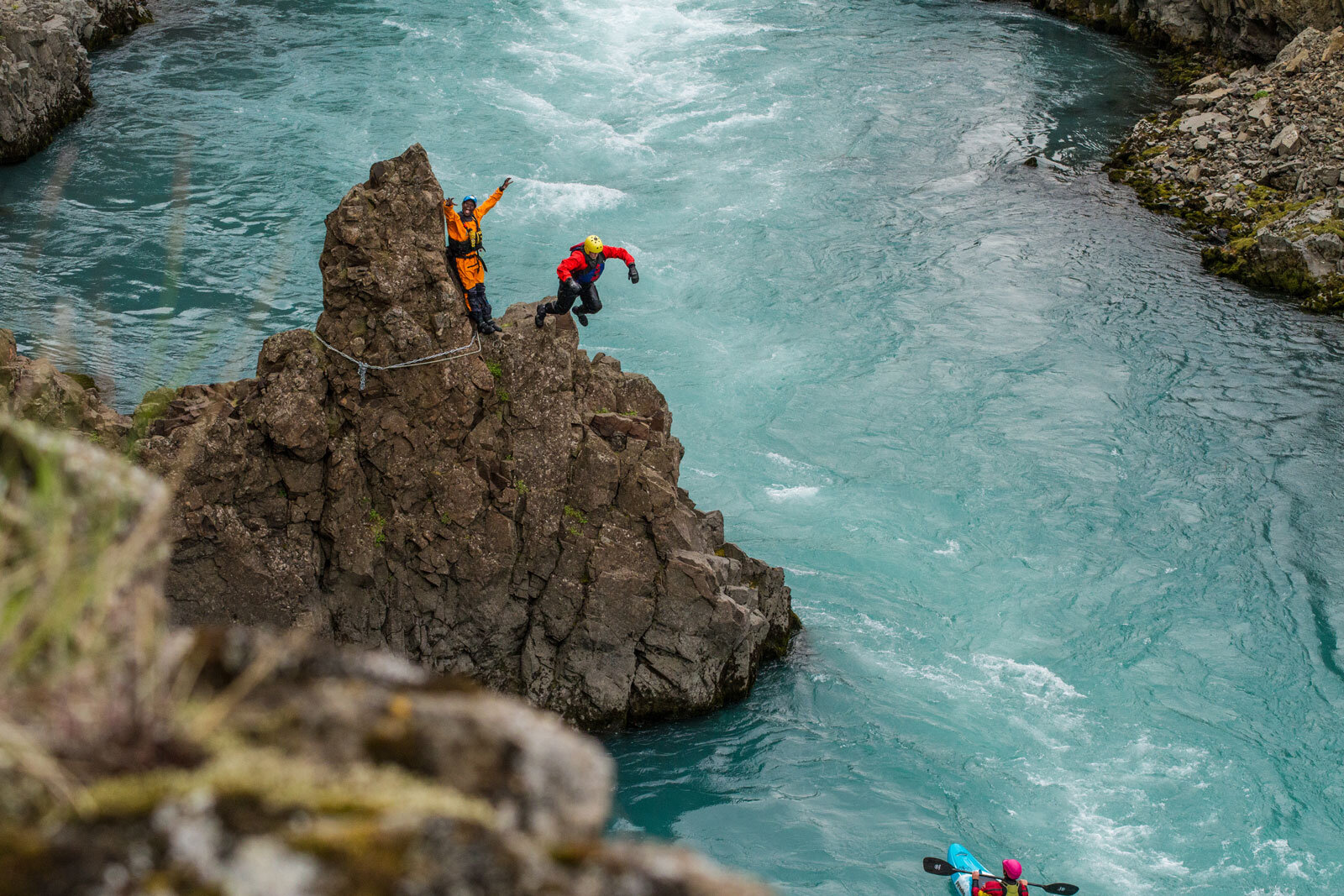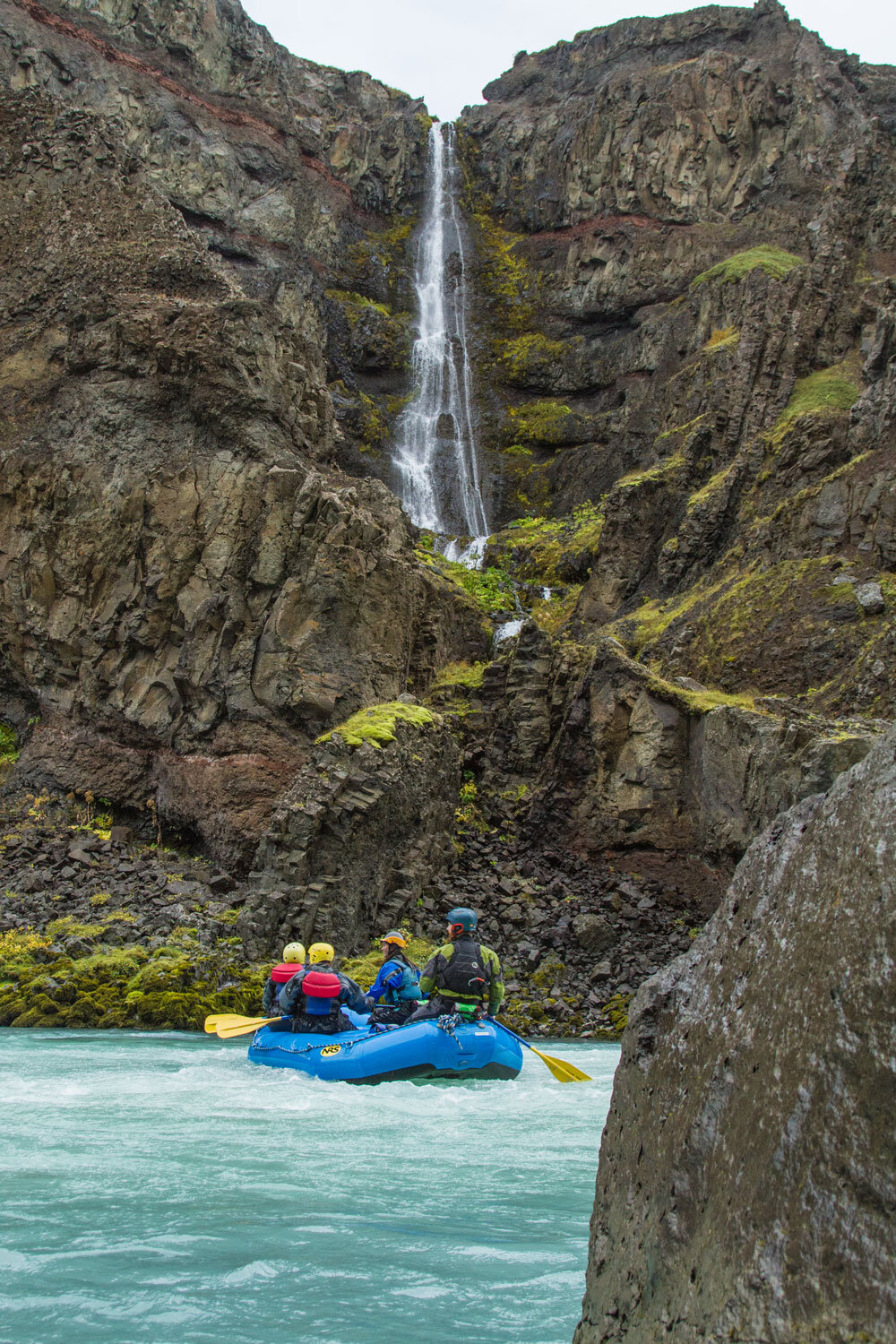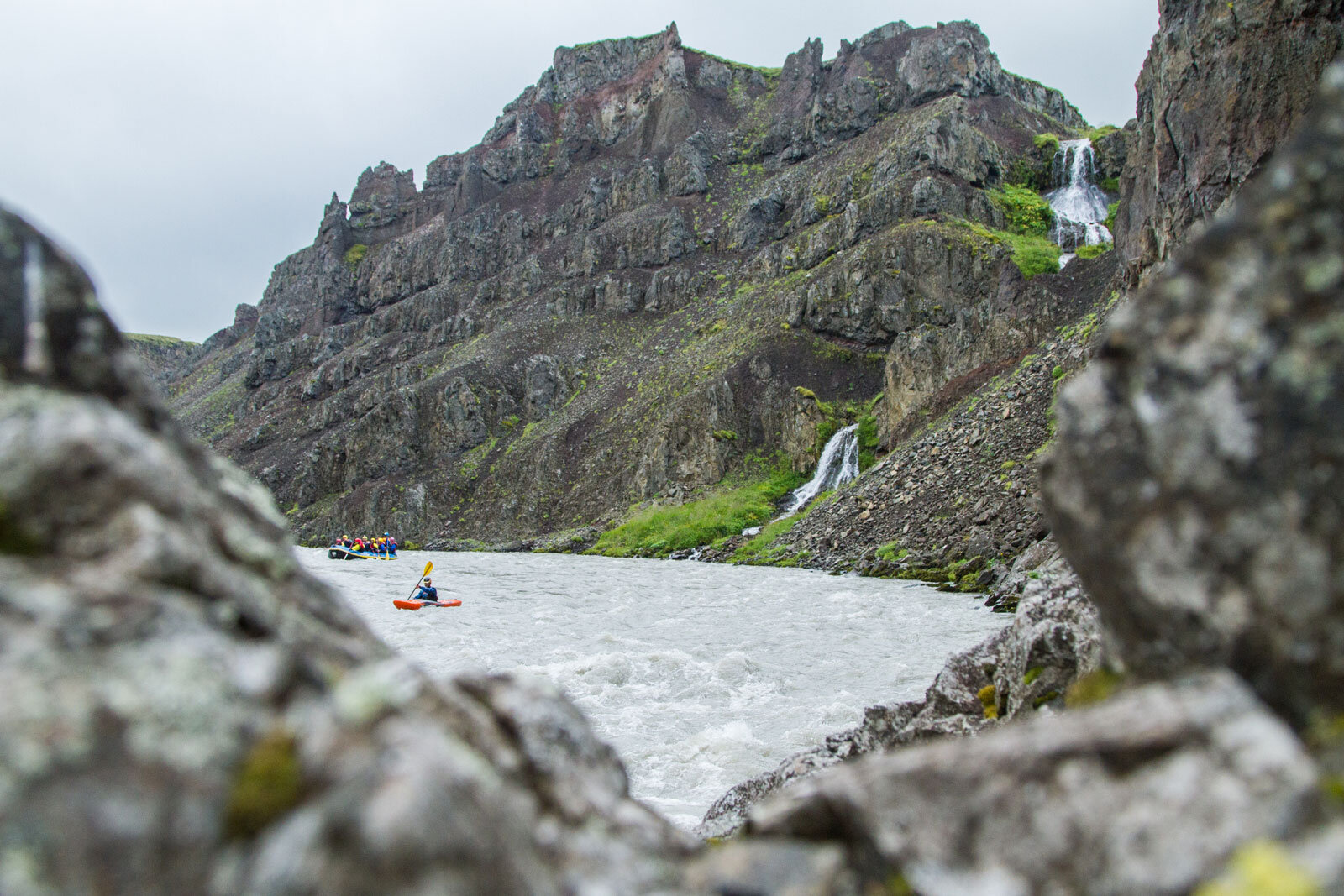Feel the Churn: Kayaking a Glacial River in North Iceland
This article was published in issue #62 of get lost magazine PDF
Photography by Mirto Menghetti
In the wilds of northern Iceland, the only way to take on the white water of the East Glacial River is on a raft.
White. That’s the last thing I remember. Not a thought, just a colour. Then a sensation: freezing cold, like a thousand ice cubes under my drysuit. I’m submerged in raging white water, trying to remain calm, which isn’t easy to do when you’ve just been catapulted into a glacial river in northern Iceland.
I’m starting to panic as the current drags me downstream and parts of my face go numb. But then I remember a snippet of the safety speech drilled into us by Ryan, our Kiwi guide, before we started this crazy adventure. “If you do fall overboard, and you most undoubtedly will, there’s only one thing you must do: smile,” he’d told us. “Don’t panic, don’t scream, just smile, because we’re more likely to come and rescue you if you look like you’re having a good time.” It’s a joke, obviously, but even still, as the Class IV river pulls me in the direction of a frothy drop to who knows where, I find myself smiling so hard and broad it hurts.
I’m tackling the East Glacial River, arguably one of the most remote white-water rafting experiences on the planet. Hidden in the wilds of northern Iceland, a 30-minute drive on gravel roads from Viking Rafting headquarters at the south end of Varmahlíð, this river rages through a deep, isolated gorge with such intensity it’s been called the Beast of the East. And I can see why: it’s only been five minutes and already this raging monster has threatened to swallow me up good and proper.
“The risk of flailing in frigid water as a furious torrent threatens to punch the air from our lungs is a game of chance, and the odds are definitely stacked against us.”
Thankfully, it’s just a taste test and I survive, swimming against the strong current back to the raft and pulling myself into the vessel with the help of my fellow paddlers. Safely back, I realise I was the only member of the crew to go overboard, and at the very first rapid too, aptly named the Alarm Clock. It’s a little embarrassing, but perhaps necessary. An hour ago, while donning my thermals, fleece and dry suit at HQ, I was fighting a nagging case of jet lag. I’m wide awake now though, and eager to ride this churning beast even further.
The gorge narrows and the intensity, well, intensifies. Waves rock us violently from side to side almost non-stop as vast volumes of glacial melt water, estimated to flow at 160 cubic metres a second at the height of summer, rage between steep walls, taking everything downstream until it eventually drains out into Skagafjörður bay. We’re carried along like a hollowed-out rubber cork harbouring wide-eyed passengers who really have no control. Thankfully, both Ryan and our other guide, Lizzy, an Australian, are masters at navigating while being propelled by the unrelenting flow. There’s also a pair of safety kayakers who are there if we need them.
For the next 30 minutes, we’re continually called into action – oars in hand, adrenaline pumping – waiting on our guides’ orders as we smash into wave after wave. We either paddle ferociously and meet the rapids with gusto or curl up into a ball and anchor into the raft to stop from being flung out. In other words, it’s either paddle or don’t paddle, a binary response system that consumes the extent of my mental processing power as we crash and descend one roaring rapid at a time. In this unforgiving environment, there’s simply no time to be scared.
But it’s hard to remain fearless before the almighty Green Room, the biggest rapid of the trip, which is now ahead of us. This Class IV monster of turbulent white water is the stuff of legends and routine capsizing. It gets its name from the fact that green is all you see once you’ve been chucked overboard – well, green or black, depending on how deep you’re pummeled into its depths. This rapid is the kind of impasse that requires a severely worded briefing on what’s to come as we float towards its drop. According to Ryan, we’ll need to take the biggest breath we can just prior to reaching the ferocious fiend – if we capsize we may be pulled under for a very long time.
It’s routine for the guides, but Russian roulette for our group of intrepid paddlers. The risk of flailing in frigid water as a furious torrent threatens to punch the air from our lungs is a game of chance, and the odds are definitely stacked against us. While I can’t see my face, I imagine I’m wearing an expression parked somewhere between excitement and dread.
“Get down!” yells Ryan as we approach the rapid. And we do, wedging ourselves into the corners of the raft and holding our paddles towards the sky. Then a familiar course of events: white, then cold, then panic. Once again I’ve been projectiled from the raft and find myself in the white water, eager to clamber back onto our rubber lifesaver. All I can manage is a strained grimace as I clasp desperately for the slippery side of the raft. I throw my paddle into its belly and haul myself back in, gasping and almost in a state of shock.
“It’s routine for the guides, but Russian roulette for our group of intrepid paddlers. The risk of flailing in frigid water as a furious torrent threatens to punch the air from our lungs is a game of chance, and the odds are definitely stacked against us.”
This stupor of sorts doesn’t last. Almost immediately I’m called into action to help the others. I pull up a young Swede by the straps of her life jacket, while the others rescue an older American from the turbulent conditions. Safely aboard, the group lets out a collective sigh of relief followed by a high five with paddles. We made it through the scariest part of the course, and we deserve a reward.
By the time our raft docks and I clamber onto dry land, the safety kayakers are already preparing a snack of hot chocolate and waffles with cream and rhubarb jam, all made by a local farmer. “The farmer used to hike down these walls and leave the cooler box for us,” explains Lizzy. “But he’s getting old and built this pulley system instead. It saves him a lot of effort.” Staring up, I see a rope extending up the sheer walls and disappearing over the gorge’s edge. Even in the middle of nowhere, anything can be arranged, as long as you employ a little bit of Icelandic ingenuity.
After downing a few cups of hot chocolate and some delicious waffles, it’s time to continue. After braving the scariest part of the route, it’s tempting to relish a few extra moments on dry land. But the incessant wind is scathing and it feels warmer on the water.
We continue downriver over rapids of varying difficulty as the gorge gradually widens. The basaltic walls, blanketed by patchy vegetation, are a canvas of greens, greys and whites, the vibrancy only muted by the moody clouds above. It’s an incredible slideshow of creative geology. This leisurely section requires little courage and yet delivers maximum visual pleasure. It’s the kind ratio to which I could easily become familiar.
The next section isn’t so tame, but we’re told it’s optional. Up ahead is a wave our mad guides choose to surf. It will probably flip the dinghy, we’re told, so it’s up to us whether we want to be submerged in the icy depths once more. By this point, we’ve all been dunked at least once, and so we’re happy to chance it yet again.
Like the wave, there’s another final optional extra: a seven-metre cliff jump into the river. Hold me back! For extra grip on the rocks, I remove my gloves – a decision I’ll later regret. The climb is relatively easy, with only some minor scrambling near the top, followed by a carefully maneuvered walk over to the ledge for the vertiginous plunge into the raging river below. The instructions are to jump outwards and away from the ledge as much as possible to avoid landing on the rocks directly underneath. It’s a great incentive to use the legs and I clear the rocks easily, before dropping like a stone into the water. Immediately the current drags me downstream as I stroke towards the bank, eventually emerging from the river numb from fingertips to palms. Should have kept the gloves on.
Back in the boat, it’s a struggle to hold my paddle as the gorge widens and the rapids become less intense. The spectacular rolling scenery, however, is a welcome distraction from my fingers’ lack of feeling. Eventually, our trip comes to an end and we beach the raft on the riverbank, pulling it up to where our heated van awaits to take us back to headquarters. My hands are still slightly numb as I tuck into the hot lunch served to us upon arrival, but I’m happy nonetheless. I’ve survived the Beast of the East and, more importantly, learned an important lesson: no matter what happens in life, the best you can do is smile.
TOUR THERE
Don your dry suit, brave the cold, and face your fears with Viking Rafting. This professional operation runs its Whitewater Action trip daily from 1 May to 25 September. The six-hour tour costs about AU$290 including all rafting equipment, dry suits and riverside refreshments. A shuttle service from Akureyri and lunch afterwards are available at an extra cost.
STAY THERE
Hotel Kea is a four-star hotel located right in the heart of Akureyri. There are fjord views
and it’s within walking distance of many of the town’s attractions, as well as shops, cafes and restaurants. A standard double room with breakfast starts at about AU$370 a night.
GET INFORMED
To find out what else there is to see and do in this part of the world, head to the Visit
North Iceland website.

